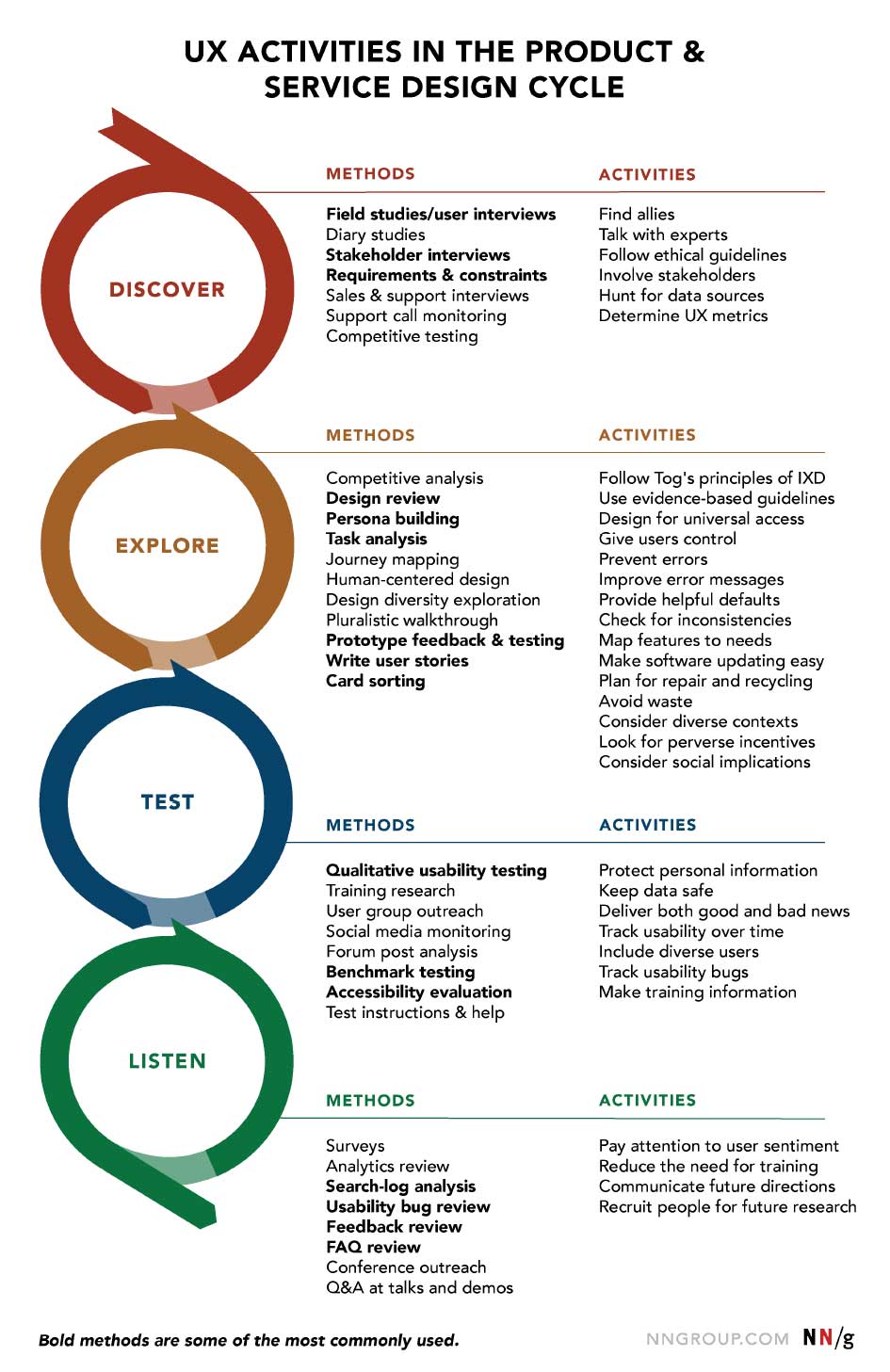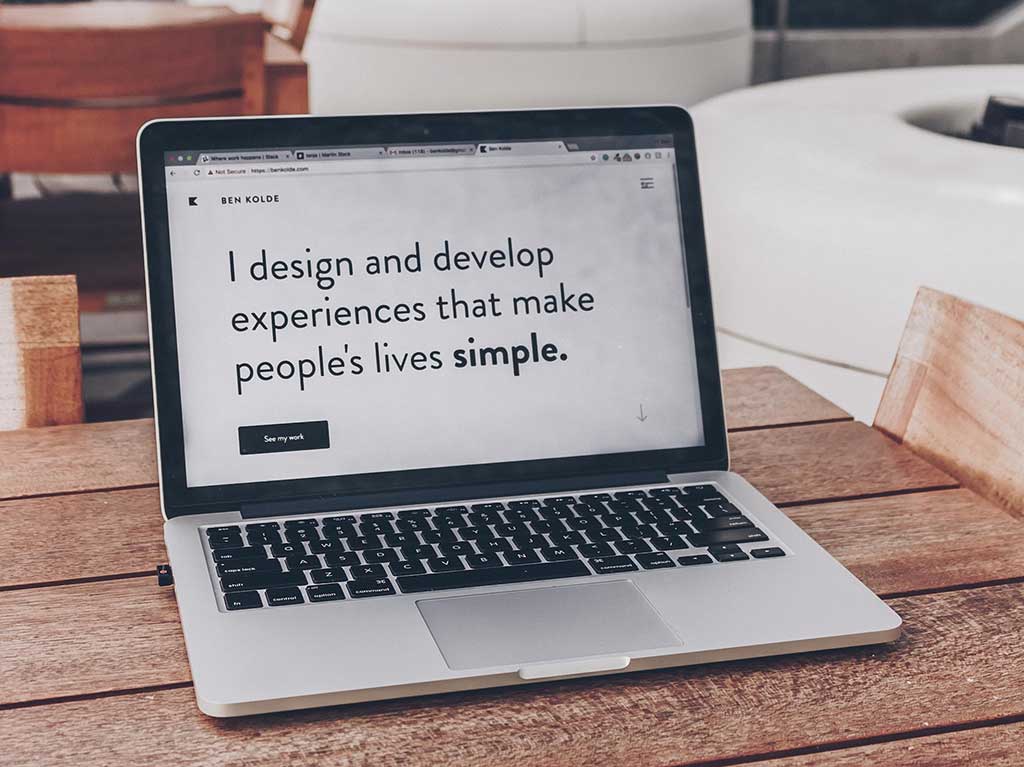Fundamentals
UX Research Process: 5-Step Framework for UX Research Projects

Written by: Phil Hesketh
Published on:
It's no secret - UX research projects can get quite messy. There's just so much to do, and often, too many stakeholders involved for the research to go smoothly.
But it is the smooth research that you want, right?
Well, then, you'll love this guide. Below, I'll show you what a typical UX research process should look like, as well as the 5-step framework for conducting UX research.
Intrigued? Let's get right to it, then.
What is the UX research process?
When we use the term - UX research process - we actually mean the foundation for the entire project. That's because the process defines how you go about almost every aspect of UX research - from setting goals or choosing research methods to analyzing the data.
But why do you need to define a structured process for user research?
You know what to do, after all. You should be able to just, well, do it...
Well, in theory, yes. But there's a bit more to it.
Let me explain.
The “curse of knowledge” is real, and companies without a good research framework in place can easily fall into the trap of designing based on internal assumptions, guesswork, or poor-quality data.
Creating a methodical, consistent process will save your organization valuable time, money, and people resources—and help you sidestep this tendency to build for stakeholders instead of end users.
Your UX research process will ensure that both stakeholders and your research teams are aligned on the “why” and “how” of every study, and that clear goals are established before any work begins.
In addition to the functional aspect, your user research process should also pay close attention to responsible and ethical data management, compliance, and informed consent.
Every research touchpoint should ensure that participants feel comfortable about providing their personal details and are happy to give their time freely to share feedback that helps you optimize your product.
When you’re looking at how to structure your UX research process, there’s no “right” way. The most useful process is one that’s tailored to your unique needs as a business and one that’s flexible enough to grow alongside your product, teams, and users as your scale.
I recommend you start with a simple, five-step process that you can adapt to your specific needs, as follows:
Clarify your goals
Choose the research methods
Collect data
Analyze data
Share your findings
We’ll go into each of these UX research steps in detail shortly.
The benefits of developing a methodical UX research process
A systematic research process will act as your roadmap for quality data collection and help your teams develop deeper customer empathy over time. This allows you to get more transparency into what users want, need, and expect from your product or service.
Your UX process has valuable benefits for:
Your business - with deeper insights into the user experience, you can incorporate user needs into product designs based on solid data. You’ll also speed up development time, reduce labor costs, and improve the overall customer experience.
Your product - teams can make faster, better decisions around the design process, get a clearer understanding of how end users experience the product, and understand how people are using the product in the real world to solve problems.
Your users - researchers can capture the thoughts and experiences of users in their own words, enabling UX teams to create designs and products that match their users’ expectations.
Having a good process in place means that when you conduct user research, you’re not basing decisions on assumptions that can lead to bad product and design decisions.
With clear goals in mind, real problems to solve, and a defined approach laid out, research teams can begin to uncover valuable customer insights and apply them in a way that delights users, improves sales and Customer Lifetime Value (CLTV), and keeps stakeholders happy every step of the way.
What are the five steps of UX research?
Research can be exciting and overwhelming, and with so much new information coming in from users, it’s easy for researchers to get sidetracked and forget their initial objectives.
These are the 5 UX research phases we recommend to help your teams stay focused and achieve better outcomes in less time. We’ll go into each step in detail to help you better visualize what the overall process should look like.
1. Clarify research goals
The UX research process can be an exciting time for your team. But before you launch headfirst into any new initiative, it’s essential that you sit down and plan your research, starting with the overall objectives and problems that you want to address.
Hold a kickoff meeting.
It’s helpful to hold a meeting between relevant team members to map out research goals and align them with greater business goals and KPIs. For example, how will improving the checkout page design increase conversions - and how does this tie to revenue?
Everyone involved in UX research initiatives should understand the underlying business goals behind what they’re doing. This includes stakeholders, designers, product leaders, and developers. UX isn’t just the UX team’s responsibility—everybody is essentially responsible for product development and the experience it creates for the user.
An initial workshop ensures that stakeholders understand what designers and researchers are trying to achieve with their research—and in turn, that UX team members understand the overarching goals they need to keep in mind during the discovery and analysis phases.
Identify key goals and problems
This step gives your team a framework to base the rest of their process around. Your main goals will stem from the key problems you’ve identified, and give teams and stakeholders a concrete “why” behind any research that’s being undertaken.
It’s important that all research goals address real and existing problems faced by users. In your kickoff workshop, it’s helpful if relevant team members bring in ideas they want to explore, or problems they’re looking to solve.
These problems and ideas might stem from customers, or come in from your design or product team. This part of the process is a great opportunity to brainstorm and collaborate on how to tie problems, goals, and business metrics together.
Establishing goals and problems is the essential start point of your UX research process. You might want to explore questions such as:
What do we know about this problem?
What don’t we know about it?
Who are the users that would be best to talk to about this problem?
How will we approach this problem once we have the research findings?
Create a hypothesis
Once you’ve established goals and problems, you can use them to form a hypothesis (or several) for your research study.
Your hypothesis is simply an assumption based on the problems you’ve identified—presented in a testable form. As you move through the research process, you’ll be seeking to test and prove this hypothesis wrong.
When your team is forming this hypothesis, they’ll need to decide on the expected outcome of the research, based on the knowledge they already have.
For example: “Changing the “Complete Your Order” button color on our checkout page will lead to increased purchases”.
Develop research questions
Once the hypothesis is complete, you can begin to define the key questions you’ll be asking research participants.
Your questions should be open-ended wherever possible to allow you to collect data that isn’t colored by researchers’ own biases or assumptions.
Avoid leading questions at all costs, and give your users as many opportunities as possible to contribute their ideas and opinions. Giving your participants the space to speak freely can be a goldmine of new ideas that can help you solve problems and reach the goals you set out at the start of phase 1.
2. Decide on UX research methods
With phase 1 taken care of, it’s time to think about which user research methods you’ll need, and the type of data that each will provide to help you achieve your objectives.
Whether you choose to use a variety of different methods, or cherry pick one or two that best suit your study is up to you.
We recommend a combination of attitudinal and behavioral research methods in most cases.
Attitudinal research - this includes things like card sorting, focus groups, and customer interviews. It gives you insights into how users are feeling, and what they’re thinking.
Behavioral research - this covers A/B tests, eye-tracking, heatmaps, and recorded user walkthrough. These are all useful ways to discover how users physically interact with your product.
Using both methods will help your research team fill in the gaps between what users tell you, and what they actually do when they use your product. Those two things can be very different once you start digging into research!
You’ll also need to think about collecting statistical data (quantitative) vs gathering customer insights (qualitative data).
Your qualitative data doesn’t require as many participants as quantitative research, enabling you to work with smaller sample sizes. This type of data collection can uncover patterns in user activity and engagement with your product. It might take the form of:
User interviews - as the name suggests, this involves a researcher having a 1:1 conversation with each participant to understand their pain points and get feedback on what could be improved. These are typically general discussions, but can yield some of the richest insights.
Usability testing - you’ll show interactive prototypes to participants to get their feedback on design.
Card sorting - this is useful if you’re testing new products. Your participants will be given a set of cards and asked to sort them into logical categories that are defined by either your users, or your UX researchers.
Participatory design - this is based around the concept of users being directly involved in the design of a product.
Quantitative data allows you to see how many people are engaging in specific behaviors. When you want to collect this type of data, you can use:
Surveys - these are usually online surveys that can be quickly built with tools like Typeform, and emailed to your participants.
Eye tracking - this technology measures where people are looking on a screen, and how long they look at different things for. It’s a research method that helps give insights into visual attention, and how better flows can be created on web pages and product dashboards.
Heatmaps - Heatmaps provide a “traffic light” visualization of how people engage with a website or product. As an example, you might want to track clicks on a CTA button. For buttons with a few clicks, the heatmap will typically display a small green area around the button. But for CTAs with high clickthrough, that area will display as a larger, red color.
FURTHER READING: Discover the best tools to run UX research
Although there are many more ways you can gather customer experience research data, the above types of user research are some of the most commonly used methods.
This diagram from Nielsen Norman Group will help you get a clearer idea of the research methods you can use as part of your process, and what each one can help you achieve.

3. Collect data
Once you’ve done all the groundwork, it’s time to launch the discovery phase, where you’ll be interacting with participants and understanding what needs to be done in terms of design and product development to give users an exceptional experience.
Recruit participants
You’ll need to pinpoint representative users that are either your existing customers, or a close approximation, and that match the specifics of your ideal personas for the research.
If you plan on doing a lot of customer experience research, building a research panel can make life a lot easier for your team at this stage.
FURTHER READING: Learn what tools to use to build and manage your research panels.
Ask open ended questions
As we mentioned earlier, open-ended questions are essential to get customers to open up about their experience with your product, and what you could do to improve things.
Instead of asking “Would you find it easier to complete the checkout process if we redesigned our cart page?”, you could reframe it as something like “Can you easily find the information you need to confidently make a purchase on our website”—and then dig deeper into the answers they provide.
Giving your participants the space to think and answer at their own pace can give you ideas for high-performance designs that you may never have thought of.
Compliance and consent
Your UX researchers should be familiar with the ethical guidelines surrounding the data collection process.
As well as adhering to global regulations on data management, researchers need to have a solid understanding about what they need to collect from participants, and how to get this in an empathetic, responsible way before any personal information is gathered or used.
This ensures that participants feel valued, and that your teams aren’t risking breaches of legal or ethical codes.
FURTHER READING: Learn more about consent and GDPR in user research.
4. Analyze data
Once the data collection phase has wrapped up, you can get stuck into the good stuff—analysis.
Analyzing your raw data will give you deeper understanding and empathy for what your users are going through when they interact with your product or website.
The insights you surface will:
Tell you more about the product you’re building
Tell you more about the users you’re building for
Clarify the logical next steps in your product/design testing and iterations
What you uncover in the analysis phase can be used in a variety of ways, such as:
Developing better/new personas
Mapping the customer journey
Creating prototypes
New product ideation
Increasing conversion rates
Improving customer retention
Debriefing
When you complete your analysis, it can be a good idea to call a quick team meeting that summarizes what has been discovered.
A debriefing is a chance for your team members to reflect on the overall process so far, whether the research methods were the right ones for the study in question, and whether they’ve gathered the data that will help solve the problems and meet the goals that were decided on in phase 1.
Does your team feel they’re confident about their research findings? Or do they need to undertake more research using a different approach? And if they feel they have everything they need to draw conclusions and test their hypothesis—what should the next steps be?
This can be a great opportunity to uncover the parts of your UX research process that didn’t work so well, so you can refine the steps for your next study.
5. Share your findings
Now your hard work is done, it’s time to share what you’ve learned. Data gathering dust isn’t useful to anyone!
But how do you organize UX research in a way that’s engaging and helpful? Depending on your target audience, you could present your research findings as:
A research report - this will obviously be text-heavy and time consuming to write. But it’s a good way to capture your findings and describe your analyses in depth so everyone on your team can access the information if and when they need to.
A presentation to stakeholders and C-suite - this can enable you to present your findings in a visual way that’s easy to digest. Don’t forget to tie your findings back to the original business goals and KPIs that were discussed in your kickoff meeting.
Email - small snippets of your findings can be a great addition to weekly newsletters.
Internal communications - sharing information in bite-size pieces on channels like Slack or Basecamp can help your whole organization take an interest in what your team has uncovered during their research.
However you choose to share your findings, the key is to make it interesting and easy to understand for your chosen audience. Pull out key details that can be quickly skimmed, include images and diagrams where possible, and avoid boring jargon and buzzwords at all costs.
The UX research process is one of continuous discovery
UX research isn’t a linear process. It’s never “finished”. The cycle of discover > apply > iterate > test should happen continuously as part of your overall process for product and business growth.
At all times, your UX team should be using their research insights to:
Test assumptions
Get feedback on designs and products from customers
Brainstorm new ideas
Create new features
Find areas for improvement
Prioritize their to-do list
Get stakeholder buy-in for product updates and redesigns
Your teams should weave ongoing user conversations, research, and testing into their workflows to continually improve the customer experience.
By approaching the UX research process as something that’s ongoing, you’ll able to better quantify the ROI you get from your customer experience research with:
Improved in product performance
Increased customer satisfaction
Greater team efficiency and productivity
A growing customer base
Most importantly, your UX process will help keep everyone in your organization informed and aligned about user needs, create greater advocacy for ongoing research, and encourage greater buy-in and budgets from stakeholders.
Building ethics and compliance into your UX research process
How do you run UX research in a way that’s ethical? At Consent Kit, our focus is on helping organizations carry out responsible UX research as an integral and essential part of their process. Data protection by default and by design is something that’s natively built into our platform.
Ensuring your participant touchpoints are accessible, and follow responsible data management practices, can easily be overlooked in the flurry of research—but by baking it into your overall process, you can ensure that you keep compliant with global laws and regulations, while at the same time managing and strengthening the relationship between your organization and your customers.
You’ll need to think about how your research is carried out in a way that’s
Accessible and inclusive
Compliant with laws such as GDPR and CPRA
Transparent and empowering for participants
Secure
When your research team feels confident that they’re collecting user data in a way that checks all the boxes for consent and compliance, your participants will feel safer and more comfortable sharing their personal data and insights with you.
Wrapping up
Great UX research helps you make confident, data-driven design and development decisions. And with a flexible UX research process in place, you can create a solid foundation to guide you through every step of the exciting research journey.
With our five step guide to UX research phases, you’ll be able to develop a process that matches your needs, both now—and as your business scales.



